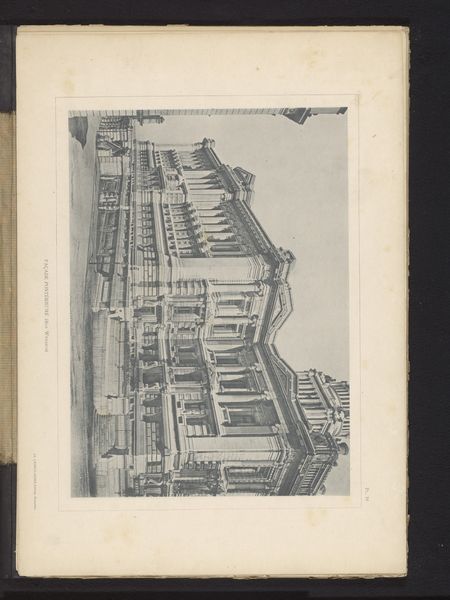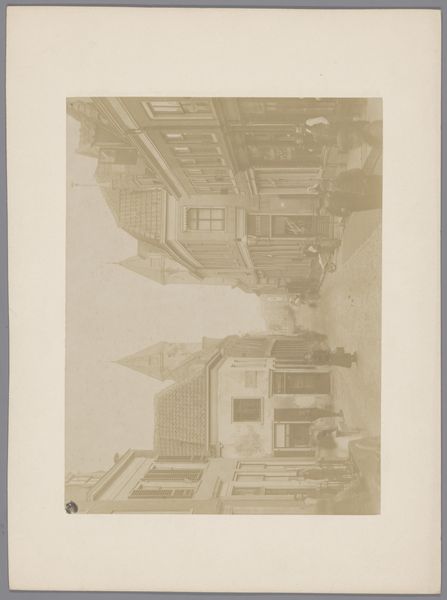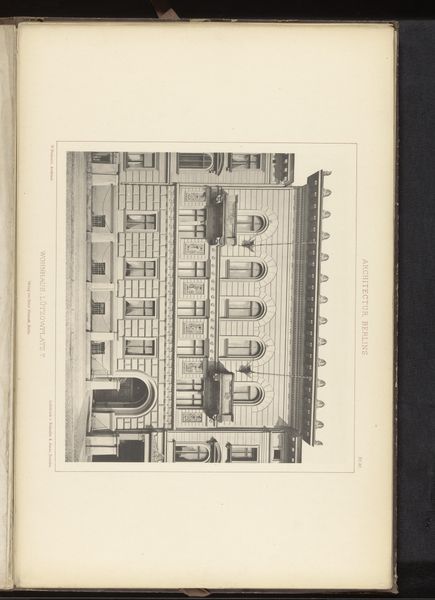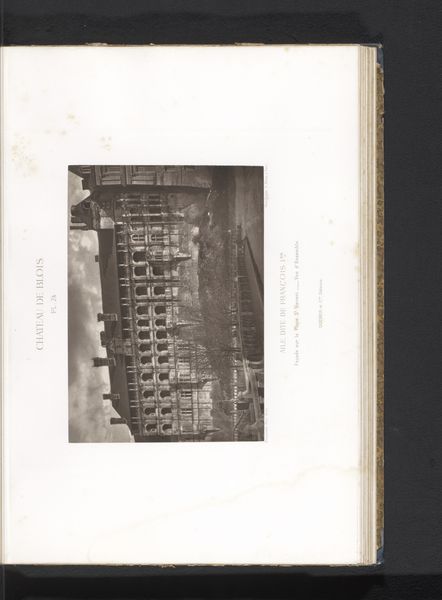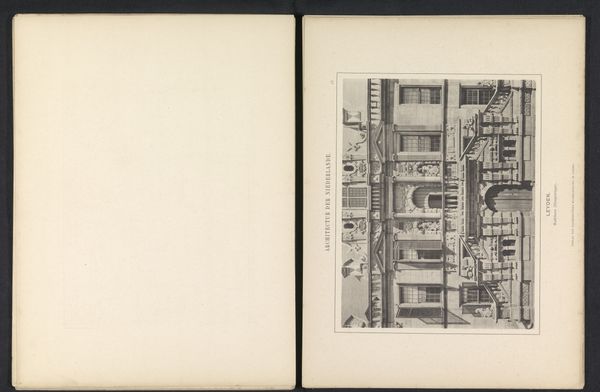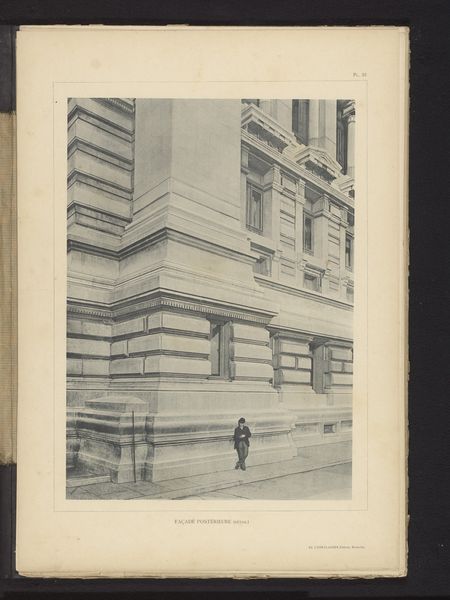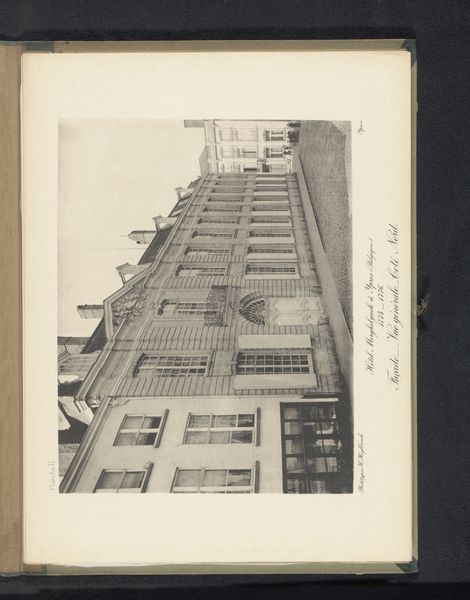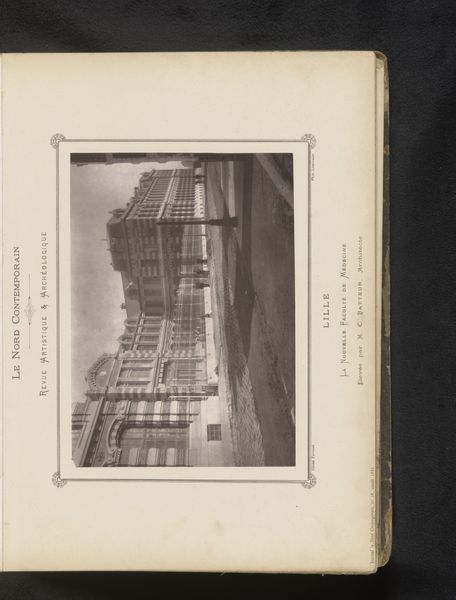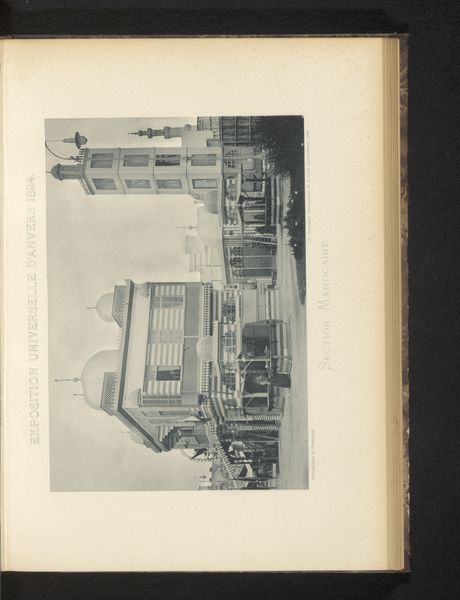
Gezicht op het middelste deel van de achterzijde van het Paleis van Justitie in Brussel, België, gezien vanaf de Wynantsstraat before 1894
0:00
0:00
drawing, print, paper, ink
#
drawing
# print
#
paper
#
ink
#
cityscape
#
realism
Dimensions: height 238 mm, width 301 mm
Copyright: Rijks Museum: Open Domain
Curator: This print, executed before 1894, offers a glimpse of the Palace of Justice in Brussels from the Wynantsstraat. It's rendered in ink on paper. Editor: Right, first impression? This building radiates a stern kind of grace, like a silent giant observing the tiny lives below. The monochrome amplifies that feeling of austere grandeur. Curator: Precisely. The artist’s skillful manipulation of line and tone creates a rigid architectural composition. Notice the rigid geometric precision that conveys not only structural solidity but also an intended hierarchy. Editor: It also evokes the building's original, now somewhat faded, context as an expression of legal and political power. Curator: True. Realism lends the work a certain documentary weight, further intensified through the calculated arrangement of visual elements. The repeated windows become a rhythm—almost musical! Editor: Like keys on an organ! Though the light's muted—everything sort of bleeds together, yet still holds this haunting quality. A very ghostly cityscape, don’t you think? Curator: I'd argue the lack of human presence and a low vantage point heighten the monolithic essence, turning a facade into an imposing symbol of civic duty and institutional authority. Editor: So well put. Makes you consider how buildings absorb all our anxieties and ideals. Thank you, somber Belgian edifice, for being so silently expressive. Curator: Indeed, it prompts reflection on both our lived environments and representational strategies that lend significance to inert objects. Editor: Profound! After our short visit, I can never see buildings in quite the same way. It seems their lines whisper.
Comments
No comments
Be the first to comment and join the conversation on the ultimate creative platform.
